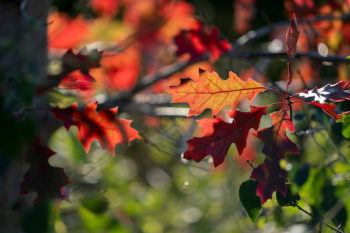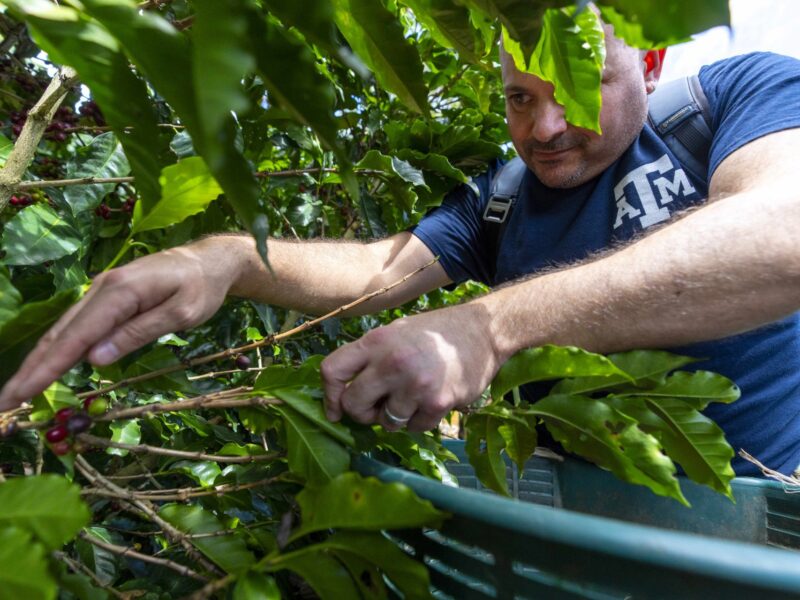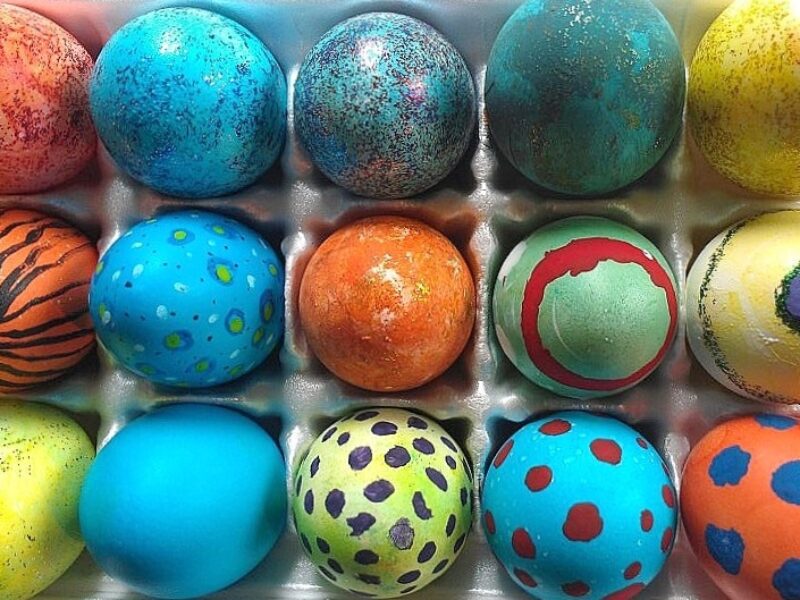3 Tips For Recycling Fall Leaves

Many people are coming across top-grade fertilizer in their yard, then simply raking it up and tossing it to the curb.
The underappreciated substance is fallen leaves, said Skip Richter, Texas A&M AgriLife Extension Service horticulture agent and host of Garden Success, KAMU FM/HD-1. Putting raked leaves in a landfill has a long-term cost for a community. Even recycling green waste via community-wide collection, while less problematic than throwing it away, is still not the simplest and most economical use of this gardening treasure.
“Leaves contain a wonderful blend of nutrients that a tree needed to grow those leaves in your yard in the first place,” Richter said. Getting rid of fallen leaves “doesn’t make any sense from an environmental standpoint, economic standpoint or just the standpoint of how nature grows leaves.”
Employing fallen leaves is easy. Richter explains three simple ways to use this bounty.
Mow Leaves Into Your Lawn To Recycle Nutrients
The simplest, easiest way to use the leaves, Richter said, is to mow over them with a mulching mower so that the leaf pieces can fall down between the grass blades. The leaf pieces will release nutrients as they decompose.
“Most people have a St. Augustine lawn, which tends to be coarse,” he said. “If you had a golf-course green, you wouldn’t be able to mow the leaves into it. But for most lawns, it’s easy. It requires no extra work because you’re mowing anyway.”
Collect And Mulch Fallen Leaves
The next-simplest alternative is to collect the leaves and spread them around shrubs, trees or vegetables so they can work as mulch.
“I run over the leaves a few times with my mower to try to break them down,” Richter said. “When you grind them up a little bit, it gives them a nicer look, and they’re less likely to blow away.”
Mulch moderates soil temperature, prevents erosion and evaporation, greatly reduces weed problems, and provides nutrients for plant roots as it decomposes over time.
Use As Compost
A third option for using falling leaves is to compost them, Richter said, pointing out that AgriLife Extension has plenty of information on how to compost at home. He has also created an online resource on composting for kids.
Composting leaves takes more commitment than mulching them, but it creates a nutrient-rich mix that can be mixed with soil to help plants thrive.
“Think about it like what happens in a coffee pot,” he said. “When water goes on top of the composted leaves, what comes out is nutrient-rich water that roots can use.”
“Most people don’t think of dead leaves as useful,” Richter added. “They think it’s a mess, but it’s not a mess. It’s nature’s own, free, slow-release, plant-based fertilizer.”
The leaves have so many uses in the garden, Richter said, that he sometimes stockpiles them during “leaf season.”
“Your neighbors are so kind,” he said. “They bag the leaves up and set them right on the curb for you.”
This article by Olga Kuchment originally appeared on AgriLife Today.





